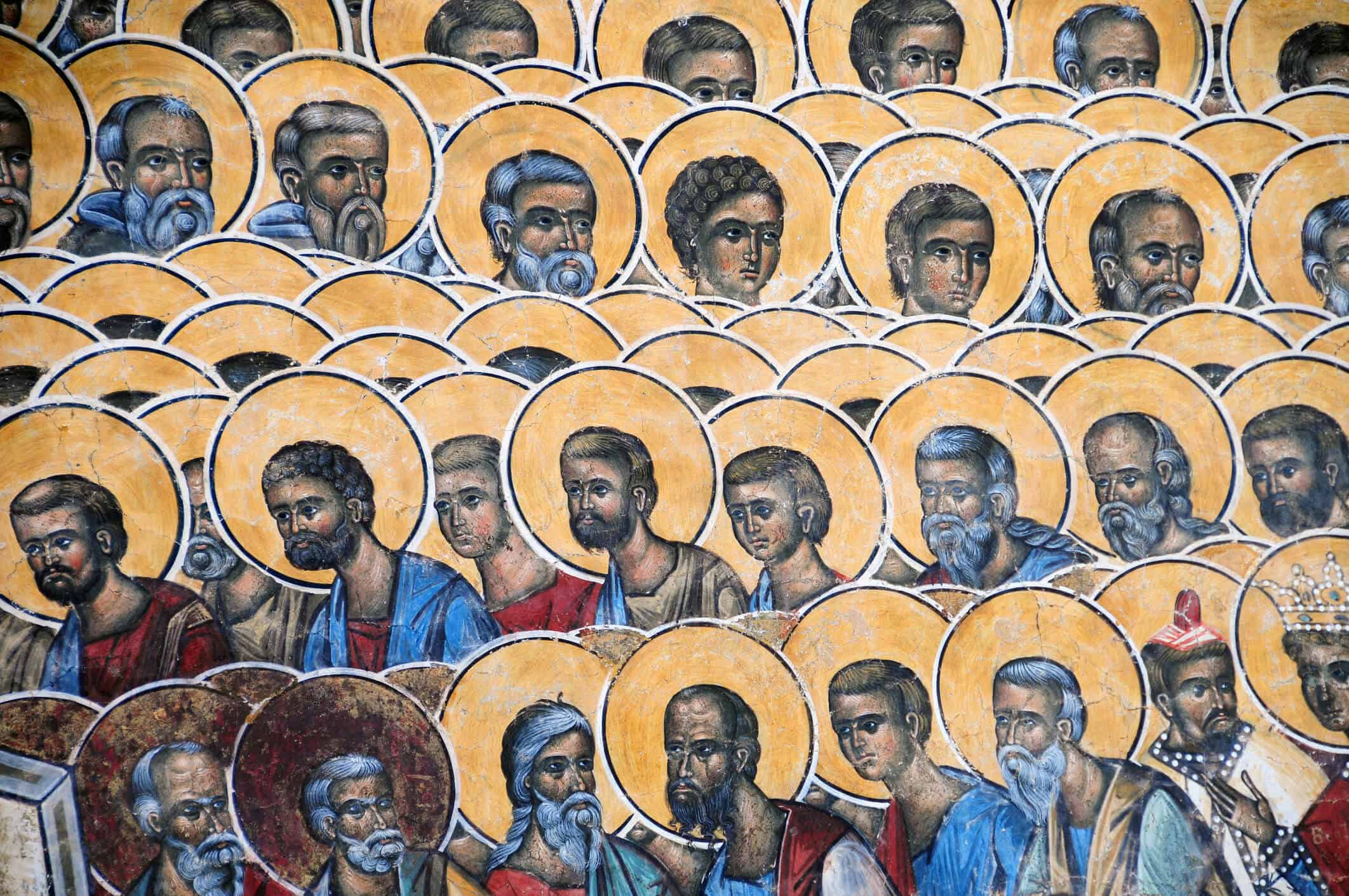October 1
St. Therese of Lisieux
Francoise-Marie Therese Martin was born to pious middle class French parents, Louis and Zelie Martin in 1873, one of nine children, only five of whom lived through childhood. She was pampered as a small child, and was devastated when, at the age of four, she lost her mother to breast cancer. Therese and her four sisters moved to Lisieux with their father, where she ws largely raised by her 16 year old sister, Pauline.
Shortly after Pauline entered the Carmelite order, Therese became gravely ill, in danger of death. When she joined her older sisters in prayer on her sick bed, where she seemed to see a statue of Mary smile at her. She was immediately cured. From then, she became deeply engaged in a life of mental prayer.
The “Little Flower” had a will of steel. When the Superior of the Carmel of Lisieux and the local bishop refused her request to join the Carmelites at the age of fourteen. she traveled to Rome with her father, and sought a papal dispensation. Although she had been forbidden to address him, she fell to her knees before Pope Leo XIII begging for his dispensation to such a degree that se had to be physically carried out by two of the Papal Guards. But she was allowed to join a year later and took her vows at age 17, assuming the name Therese of the Child Jesus and the Holy Face. She is better known to us as “The Little Flower.”
Her prioress, recognizing her deep spirituality, instructed her to write her memoirs, which were later collected into one of the classic works of Catholic spirituality, The Story of a Soul. Challenged by the austerities of life as a Carmelite and by her own devotion, she succumbed to tuberculosis in 1897, at age 24. She defined her path to God and holiness as The Little Way, which consisted of child-like love and trust in God. For her writings that provide a “luminous expression of her knowledge of the mystery of the kingdom and of her personal experience of grace,”(Pope John Paul II – Divini Amoris Scientia), she deservedly was named as a Doctor of the Church.
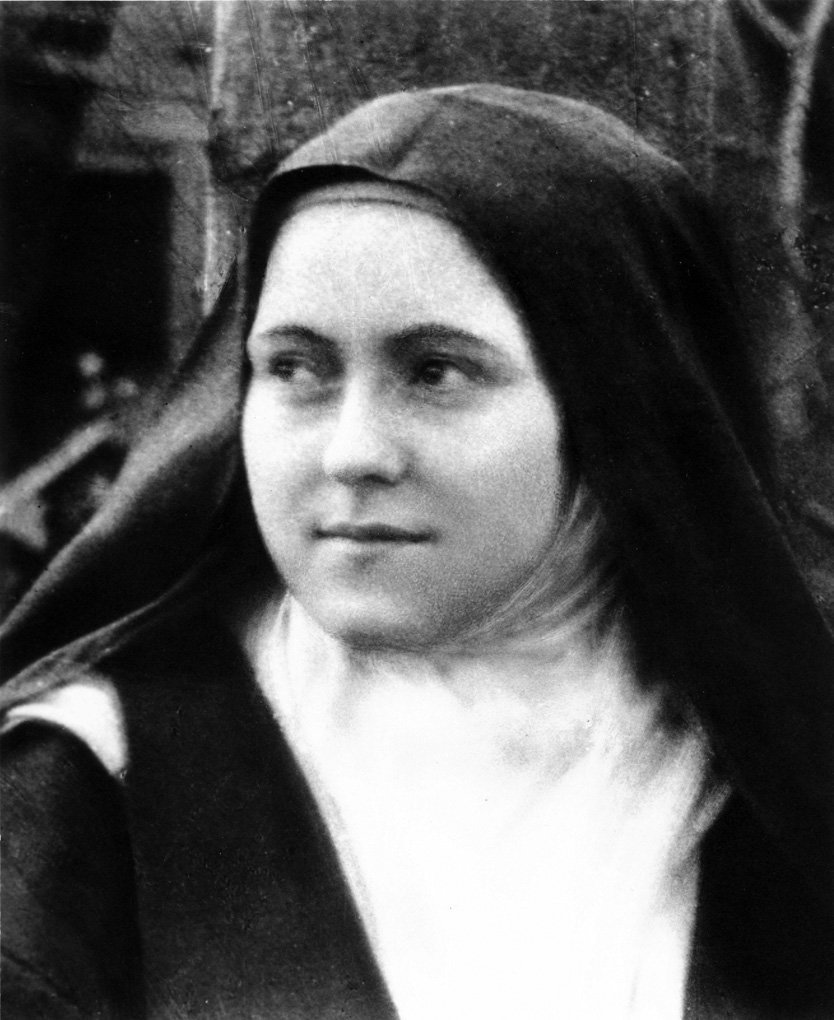
“I prefer the monotony of obscure sacrifice to all ecstasies. To pick up a pin for love can convert a soul.”
St. Therese of Lisieux
October 4
St. Francis of Assisi
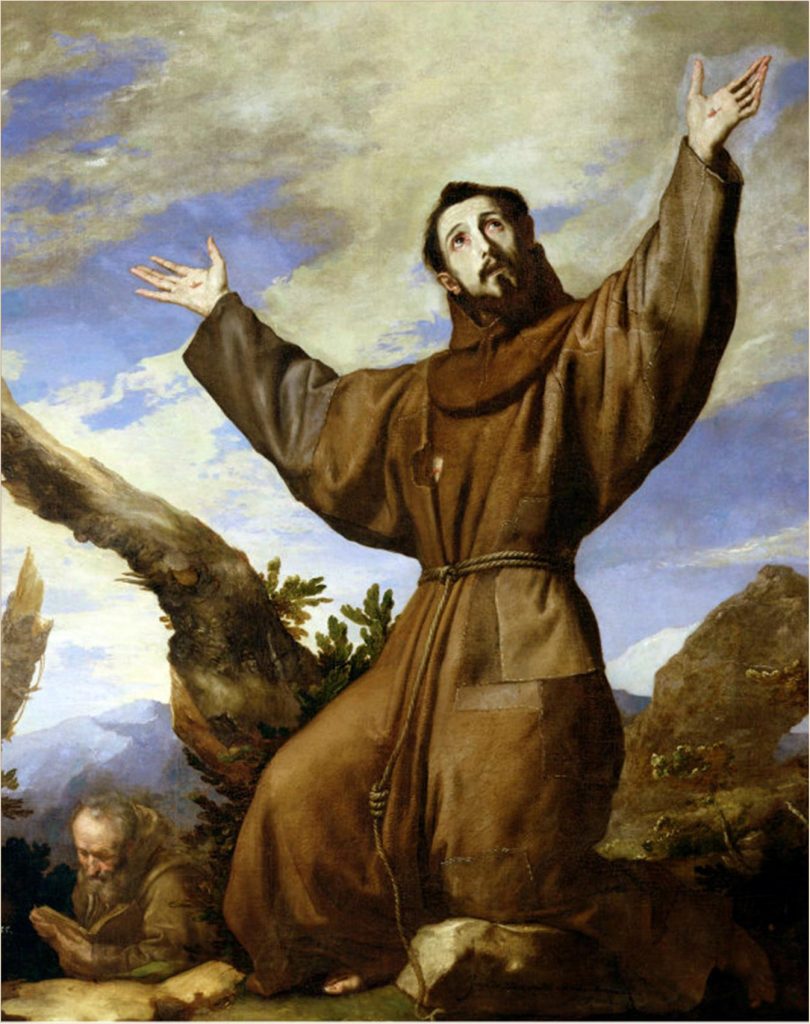
“What do you have to fear? Nothing. Whom do you have to fear? No one. Why? Because whoever has joined forces with God obtains three great privileges: omnipotence without power, intoxication without wine, and life without death.“
St. Francis of Assisi
Francis was the son of Pietro Bernadone, a wealthy merchant. As a youth, he led the town youths in a life of parties, brawling, and other irresponsible actions. While still young, he joined the forces of Assisi in a war against Perugia. He was captured and imprisoned for a year. Returning to Assisi, he renewed his pursuit of martial glory by volunteering for the Fourth Crusade. But, on his way to join the Crusaders, he experienced a dream in which God told him to return home. He did so, but came to be branded as a coward by his fellow townsmen; his father was enraged at the money that was wasted on his being outfitted as a knight.
Francis’s conversion came slowly. One day, while out riding, he encountered a leper. Francis was appalled by the man’s deformity and odor; never the less, he sprang from his horse and gave the leper a kiss of peace. Looking back as he continued his ride, he saw that the leper had disappeared.
He fell into the habit of praying at a crumbling church dedicated to San Damiano. He was before the crucifix and heard Christ tell him, “Francis, repair my church.” Francis leapt into action, stealing a bolt of rich cloth from his fathers’ shop, and selling it – and his horse – in a nearby town. Learning of the theft, his father dragged Francis before the bishop and disowned Francis.
In time Francis came to realize that Christ’s order to repair his church did not refer just to San Damiano but to the entire church on earth. He visited hospitals, served the sick, preached, and begged in the streets. At first scorned and derided, he eventually began to attract those of like mind, whose guidance was found in Christ’s words, “Announce the kingdom! Possess no gold or silver or copper in your purses, no traveling bag, no sandals, no staff” (Luke 9:1-3).
In 1209, he founded the Franciscan order, with the blessing of the Pope, and called on his followers to listen to the words of Christ to “Leave all and follow me.” In 1212 his follower Clare of Assisi became his student, and founded the Poor Clares.
In 1221 he resigned direction of the Franciscans. Three years later, whie praying, he experienced a religious ecstasy in which he received on his own body the five wounds of Christ. He was the first to receive the stigmata, in recognition of his great love for Christ. He died in 1226.
October 5
St. Faustina Kowalska
Newly canonized in 2000, St. Faustina Kowalska, was a Polish nun who was chosen by Jesus to remind the world of the mystery of God’s merciful love.
Helena Kowalska was born into a large, poor Polish family. A call which had been strong since childhood matured into a desire to enter religious life. When her family prevailed on her to remain in the world, our Lord appeared to her to ask her why she made him wait. She left home at once and entered the Sisters of our Lady of Mercy, where she received the name Maria Faustina. With only three years of schooling, Faustina was made a lay sister and assigned to the most humble and menial tasks: cooking, gardening, and tending the door.
However, in 1931, she received extraordinary revelations — or messages — from our Lord Jesus. Jesus asked Sr. Faustina to record these experiences, which she compiled into notebooks. He asked her to foster new devotions to his Divine Mercy, including a feast day and a chaplet of prayer. He also asked her to have a painting done, portraying His message of Divine Mercy.
Three years later, after her assignment to Vilnius, the first artistic rendering of the image was performed under her direction by the artist Eugene Kazimierowski. The two rays issuing from the heart of Jesus are symbolic of the Blood and Water that issued from Jesus when he was pierced on the cross. The pale ray stands for the Water which makes souls righteous. The red ray stands for the Blood which is the life of souls.
Contemplating Christ’s love as expressed in his passion led Faustina to a new understanding of her own capacity to love. She wrote in her Diary, “All my neighbors’ sufferings reverberate in my own heart; I carry their anguish in my heart in such a way that it even physically destroys me. I would like all their sorrow to fall upon me, in order to relieve my neighbor.” In this spirit of offering, Faustina died of tuberculosis at the age of thirty-three.
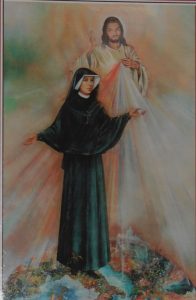
“O my Lord, inflame my heart with love for You, that my spirit may not grow weary amidst the storms, the sufferings and the trials. You see how weak I am. Love can do all.”
St. Faustina Kowalska
October 12
Blessed Carlo Acutis
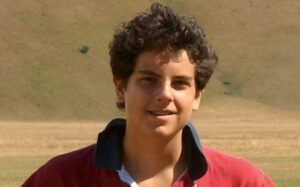
“I am happy to die, because I have lived my life without wasting a minute on those things which do not please God.”
Bl. Carlo Acutis
Blessed Carlo Acutis was born on May 3, 1991 in London, the son of Andrea Acutis and Antonia Salzano. His parents were financially well-off, and had worked in Germany and the United Kingdom before settling down in Milan, Italy in September 1991, shortly after Carlo’s birth.
From around the age of 4, he demonstrated great interest in Catholic religious practices. His parents were not particularly religious; so, most of his questions were answered by his family’s Polish baby-sitter. At the age of 7 he received his First holy Communion at the convent of St. Amdrogio and Nemus. He was commonly observed praying before the Tabernacle before and after Mass. He also went to Confession once per week. He enjoyed visiting Assisi where St. Francis is entombed, and adopted Francis as one of his models for living his life.
Acutis was deeply interested in many things typical of a boy his age, like football, Pokemon, action films, comic books and his PlayStation. He was considered a “computer geek” by those who knew him. He taught himself how to code and build websites while still in primary school. In school, he was always concerned with those of his friends who were bullied or who had undergone distressing events, like the divorce of their parents. He also did volunteer work with the poor and homeless.
Carlo used his computer skills to build websites for Catholic organizations. At the age of 11, he developed a site that listed and catalogued all of the Eucharistic miracles in the world. That website (http://www.miracolieucaristici.org/) is still maintained today, and is the basis for a traveling photo exhibition entitled “The Eucharistic Miracles of the World.” The exhibition has traveled to dozens of countries on 5 continents.
Believing himself to be ill with the flu, Carlo was diagnosed with an aggressive leukemia in October, 2006. He died only days later, on October 12, at the age of 15. He was interred in the former cathedral of Assisi, Santa Maria Maggiore.
Carlo Acutis was labeled a “Servant of God” in 2013, one of the first steps towards canonization. A miracle was attributed to him in November of 2019. In that miracle, a seven-year-old child who was born with a pancreatic defect was miraculously healed. His mother had prayed to Acutis, asking for his intercession and shortly after, the defect was cured, and the boy was able to eat solid food for the first time.
Pope Francis announced the beatification of Carlo Acutis, which was planned while visiting Assisi, Italy on October 10, 2020.
October 15
St. Teresa of Avila
Teresa Ali Fatim Corella Sanchez de Capeda y Ahumada was born in Avila, Spain in 1515. While young she was in chronically poor health, which did not stop her, when she was seven years old, from convincing her older brother that they should “go off to the land of the Moors and beg them, out of love of God, to cut off our heads there.” They got as far as the road from the city before an uncle found them and brought them back. As a teenager, though, she cared only about boys, clothes, flirting, and rebelling. When she was 16, her father decided she was out of control and sent her to a convent.
She was attracted to the religious life and took her vows in the Carmelite order at age 17. She found difficulty in the life of the convent. She found it too easy to slip back into a worldly life there; convents were very loose in their rules, permitting nuns to wear fashionable habits and even jewelry, to host parties, and to absent themselves from the “cloister” for lengthy periods.
Teresa was stricken with malaria, becoming so ill that a grave was dug for her. She never fully recovered her health. She was paralyzed for three years, and she used her illness as an excuse to stop praying altogether. At the age of 41, her confessor convinced her to resume her prayer life. She was continually disturbed, but finally found the key to overcoming her mental distractions; as she described, “The important thing is not to think much but to love much.”
Despite being a contemplative and being in chronically poor health, she spent much of her time and energy seeking to reform herself and the Carmelites, to lead them back to the full observance of the primitive Rule. She founded a convent at the age of 43, which observed the discipline of prayer and poverty. She founded several additional Carmelite houses, despite fierce opposition from local officials and churchmen.
Teresa was both mystic and reformer, contemplative and woman of action, a totally human font of sanctity for her sisters and for the world. Her writings, especially the Way of Perfection and The Interior Castle, have helped generations of believers. With St. Catherine of Siena, she was one of the first women to be honored as a Doctor of the Church.
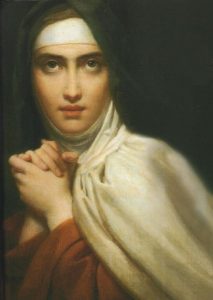
“Let nothing disturb you,
St. Teresa of Avila
let nothing frighten you,
all things are passing away:
God never changes.
“Patience obtains all things;
whoever has God lacks nothing;
God alone suffices.”
October 17
St. Ignatius of Antioch
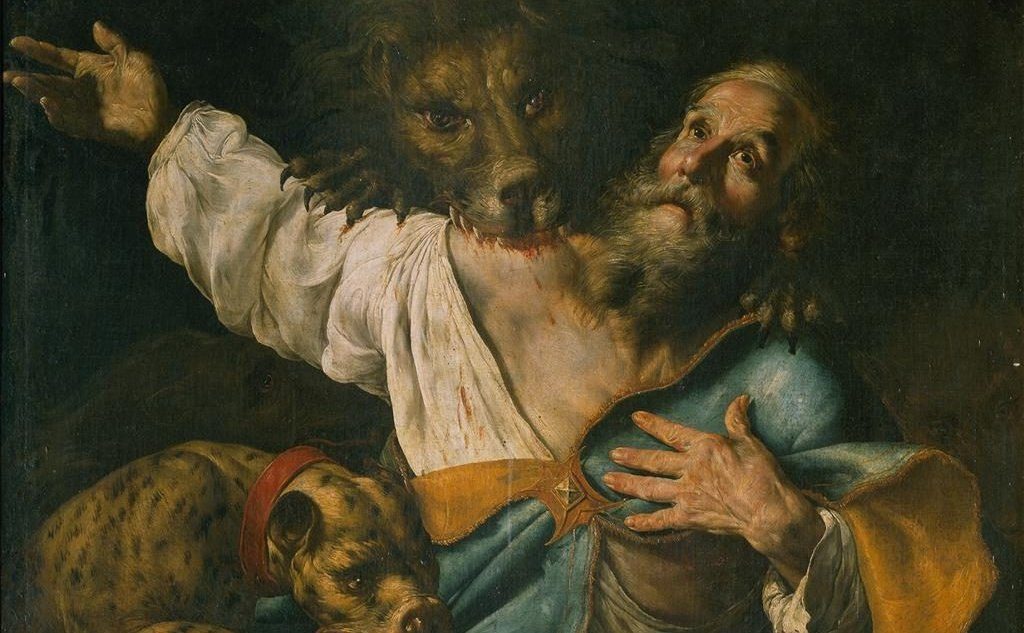
“Wherever Jesus Christ is, there is the Catholic Church”
St. Ignatius, Letter to the Smyrnaeans
Born in Syria, Ignatius converted to Christianity as a student of St. John the Evangelist; he was named “Theophorus” (“God-Bearer”) at baptism. Eventually he became the third bishop of Antioch, ordained by St. Peter around 69 AD.
In the year 107, the Emperor Trajan visited Antioch and forced the Christians there to either deny the faith or die. Ignatius would not deny Christ and thus was condemned to be put to death in Rome. He was transported by ship to Rome under guard.
During his long journey from Antioch to Rome, he wrote seven letters, in the body of which he became the first to use the term “Catholic” to describe the Church. Five letters were to churches in Asia Minor, urging his congregations to hold fast to the faith and to obey those shepherds set over them. He warns them against heretical doctrines, providing them with the solid truths of the Christian faith, especially about the Eucharist and the reality of Jesus’s human nature.
A sixth letter was written to Polycarp, bishop of Smyrna, who was later martyred for the faith. In the final letter, written to the church in Rome, he begs the Roman faithful to not try to stop his martyrdom. “I am God’s wheat and I shall be ground by the teeth of beasts, that I may become the pure bread of Christ.”
Ignatius was killed and devoured by two lions in the Circus Maximus, as thousands watched his death.
October 22
Pope St. John Paul II
Born in Wadowice, Poland, in 1920 Karol Jozef Wojtyla felt his call to the priesthood early in life. He attended the University of Krakow, but when it was closed by the Nazis in 1939, he became a laborer in a stone quarry. In 1942, he shifted his education to secretly preparing for the priesthood. He studied theology in Rome after the war, and returned to Poland as a teacher. Communist officials, judging him a harmless intellectual, permitted his elevation as a bishop. Always an outdoorsman, he learned of this while kayaking!
He was Elected as pope, and was invested on October 22, 1978; at 58, the youngest in 150 years, and the first non-Italian in 455 years. John Paul II was the most traveled pope in history, having visited nearly every country in the world which would receive him. As the Vicar of Christ he consecrated each place that he visited to the Blessed Virgin Mary. He was an outspoken opponent of apartheid, abortion, capital punishment, and the Iraq war. He promoted ecumenical and interfaith initiatives. One of the most well-remembered photos of John Paul II’s pontificate was his one-on-one conversation in 1983, with Mehmet Ali Agca, who had attempted to assassinate him two years earlier.
In the last years of his life, he suffered from Parkinson’s disease and osteo arthiritis, finally succumbing in 2005; he died in the Vatican, in accord with his wishes. John Paul II was the second longest-serving pope in modern history after Pope Pius IX.
To be eligible for canonization (being declared a saint) by the Catholic Church, two miracles must be attributed to a candidate. The first miracle attributed to John Paul was the healing of a Columbian man’s Parkinson’s disease; the second, the healing of Costa Rican woman Floribeth Mora of an otherwise terminal brain aneurysm.
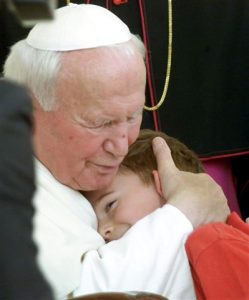
“The great danger for family life, in the midst of any society whose idols are pleasure, comfort, and independence, lies in the fact that people close their hearts and become selfish.”
Pope St. John Paul II
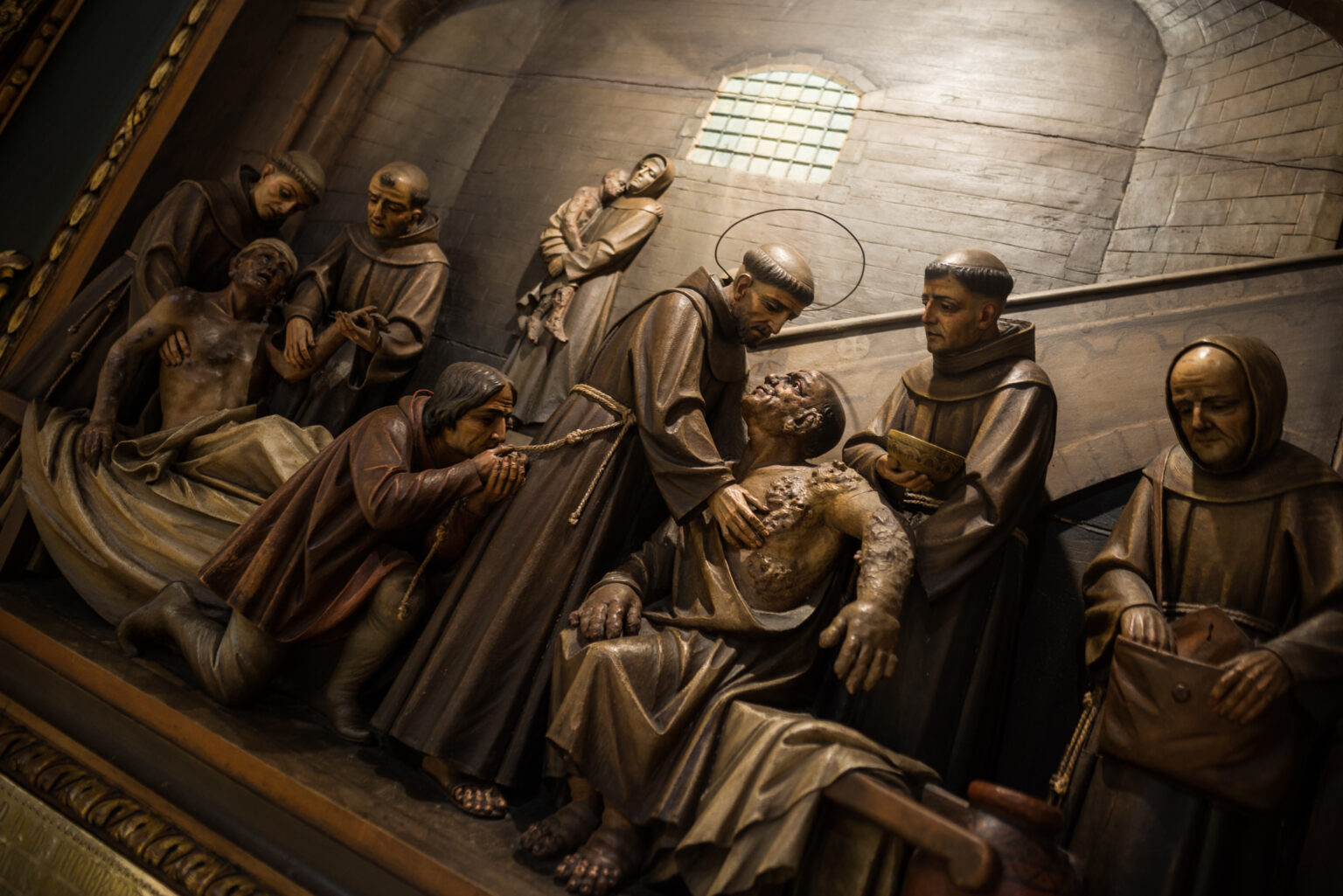
October 25
The 40 Martyrs of England and Wales
Following the dispute between the Pope and King Henry VIII in the 16th century, faith questions in the British Isles became entangled with political questions, with both often being settled by torture and murder of loyal Catholics. In 1970, the Vatican selected 40 martyrs, men and women, lay and religious, to represent the full group of perhaps 300 known to have died for their faith and allegiance to the Church between 1535 and 1679. They each have their own day of memorial, but are remembered as a group on 25 October.
Saint Edmund Campion was an English Roman Catholic Jesuit priest and martyr. While conducting an underground ministry in officially Anglican England, Campion was arrested by priest hunters. Convicted of high treason, he was hanged, drawn and quartered at Tyburn. He is one of the Forty Martyrs of England and Wales.
St. Margaret Clitherow, wife, mother and martyr, was a fearless protector of her faith. She harbored priests in her home during raids in protestant England, and for this, she was condemned to be crushed to death. “The sheriffs have said that I am going to die this coming Friday, and I feel the weakness of my flesh which is troubled at this news, but my spirit rejoices greatly.” She died on Good Friday, March 25th, 1586. Margaret’s last words were “Jesus, Jesus, Jesus, have mercy on me!”
October 29
Bl. Chiara Luce Badano
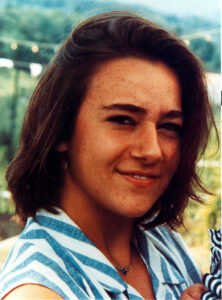
“I have nothing left, but I still have my heart and with that, I can always love.”
Bl. Chiara Badano
Chiara Badano was a young lay woman born on October 29, 1971 in the Diocese of Aqui Terme, Italy. Her parents, Ruggero and Maria Teresa Badano waited and prayed eleven years to have Chiara. She grew up to be a a kind, happy and pious girl, who loved sports and enjoyed tennis, swimming, hiking, singing, and dancing.
She received a solid Catholic education from her parents, who believed they should teach more by example than by words. Once, her mother suggested she had too many toys and asked her to donate some to less fortunate children. At first, Chiara resisted, but then she went into her bedroom and divided her toys into two piles. Her mother pointed out that she was giving away her new toys, and Chiara said that she could not give her old toys to the poor children.
At age nine she joined the Focolare Movement and received the nickname “Luce” by the founder Chiara Lubich. According to the Focolare Movement’s web page, ”Our aim is to contribute to building a more united world in which people value and respect diversity.” Their purpose is to bring people together and promote unity. The word focolare means ”hearth” or ”family fireside.” Her life was full of little acts of love. One evening she wrote, “One of my classmates has chicken pox and everyone is afraid to go visit her. With my parent’s permission, I decided to do my homework over at her place so she wouldn’t feel lonely. I think love is more important than fear.”
It was the Focolare Movement’s focus on Jesus Forsaken that prompted Badano to dedicate her life to Jesus, saying, ”I want to choose him as my only spouse.” At age 16 she began to feel drawn to religious life, but shortly after was diagnosed with osteogenic sarcoma, a horribly painful bone cancer. Chiara insisted that she could become a missionary, but the cancer spread quickly, affecting her spine, and she lost the use of her legs. She spent her remaining time praying and being supportive of her family and friends. Chiara finally succumbed to cancer on October 7, 1990, after a two-year battle with the disease.
Chiara was the first member of Generation X to receive the honor of being declared a Blessed in the Church, and she achieved this status despite only living to be eighteen years old. Blessed Chiara loved Jesus and attempted to bring people to him with her actions rather than with her words. Once, when asked by her mother if she ever spoke to her friends about Jesus, she replied, “I must not talk about Jesus, I give them Jesus. First, by listening, then with the way I dress, but especially with my way of loving.”
October 30
St. Alphonso Rodriguez
Alphonso Rodriguez was the third of eleven children born to a wealthy wool merchant Diego Rodriguez. While he was still young, his family hosted the Jesuit saint Peter Faber. So taken with the saint was Alonso that, at the age of 14, he began studies with the Jesuits. But, when his father died, he ended his studies to return home to run the family business.
At the age of 26 he married, and he and his wife had three children, two of whom died as infants. His business was failing when both his wife and his mother died. When his surviving son died, he sought to join the Jesuit order, but was refused because of his deficient education. But, at the recommendation of the Jesuit provincial, he was admitted to the order as a lay brother at the age of 40. As a part of his recommendation, the priest was supposed to have said that, if Alphonso could not enter the order to become a priest or a brother, he could enter to become a saint. With great humility, he resumed his studies in classes with children. Eventually, he became a porter and doorkeeper at the Jesuit college of Montesión on Majorca. He professed his final vows at the age of 54.
He served there in that capacity for 46 years. His job involved delivering packages, finding rooms for travelers, and dispensing alms to the poor. His influence spread far beyond his menial duties. He was consulted by civic leaders and socialites, as well as by other Jesuits like St. Peter Claver. He consoled those who came to him with their sorrows, gave advice, and spread his personal holiness among all those he served. He is supposed to have said that, every time he opened the door for someone, he envisioned God as being on the other side. He served with such love that the act of opening the door became a sacramental gesture.
St. Alphonso died at the age of 85. Having lost so much during his life, old age finally stripped him of his memory and of the many prayers that he recited. He was the subject of a sonnet by the Jesuit poet Gerard Manley Hopkins, and Pope Clement XIII declared that “the virtues of the Venerable Alonso were proved to be of a heroic degree”.
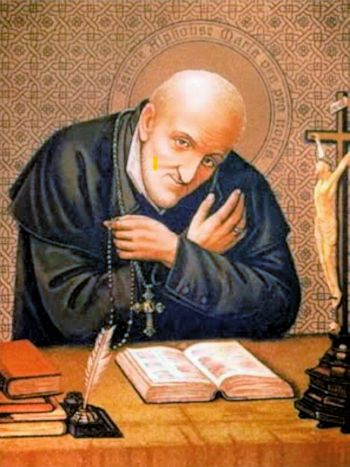
“As love is paid for in love, I must imitate Him, sharing in spirit all His sufferings. I must consider how much I owe Him and what He has done for me.”
– St. Alphonso Rodriguez

